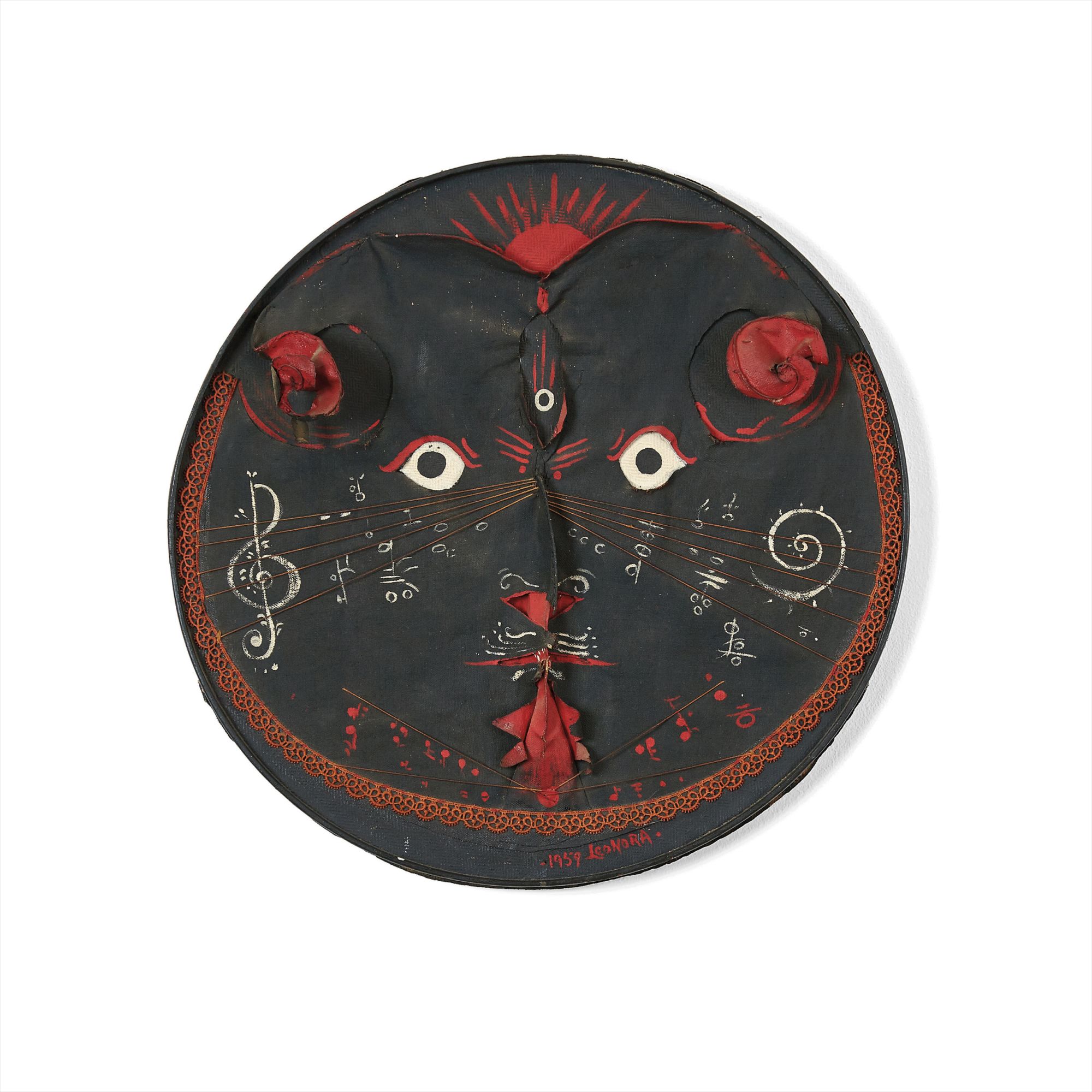Carrington’s enigmatic paintings were influenced by children’s tales such as Alice in Wonderland, English Fairy Tales and The Arabian Nights. These stories populated Carrington’s imagination with princesses and nocturnal creatures such as cats and enchantresses. In the 1950s, when Carrington moved to Mexico, she immersed herself in the study of alchemy and the occult that she transposed into a repertoire of animals and symbols in her works. At this time, Carrington began experimenting with assorted media including polychrome wood sculptures, tapestries, as well as hand-sewing and embroidery. One important work from this experimental phase is Carrington’s arresting Cat Woman (La Grande Dame) from 1951. The present lot, Untitled (1959), is reminiscent not only of the 1951 sculpture but also of Carroll’s Cheshire cat that appeared to Alice. This work is suffused with fantastical and surreal elements, such as the hand sewn lace around the cat’s face and the wires used to symbolize whiskers, which also become sheet music filled with notes, imbuing the piece with a lyrical quality. In Mexico, Carrington formed an enduring friendship with Remedios Varo, with whom she met almost daily in her home filled with cats. Carrington believed Varo’s home had a magical atmosphere and it undoubtedly influenced the symbols and iconography she depicted in her works. During this time, her life was also entwined with Edward James, the renowned Surrealist collector. James was investing his fortune in the construction of an extraordinary open air sanctuary for animals in the tropical jungle of Xilitla. He invited Carrington to paint the murals of this sanctuary that came to represent, for Carrington, the incarnation of Alice in Wonderland. Not surprisingly, the animal world became a recurrent theme in her work, as in this remarkable cat. This period in Carrington’s work was also influenced by Coptic and Eastern Medieval figurative art, as seen in the red and white dots throughout the surface of the present lot, which represent the tree of life, known for its white and red berries that bestow immortality. More importantly, this work reflects Carrington’s feeling for animals as stated in a letter, “If gods exist, I don’t believe they have human form: I prefer to envision deities with the appearance of zebras, cats, or birds. Love guides all these species: only man makes a deity of Hate with his wars, his puritanism, the oppressions against his own species and the nature around him” (Seán Kissane, Leonora Carrington – Irish Museum of Modern Art, Irish Museum of Modern Art, Dublin, 2013, p. 89). Ultimately, when confronted with this powerful and beguiling creature, we are reminded that there is no key to easily decipher Carrington’s work, yet this sculptural painting attests to her innovative pictorial language, ensuring her place as one of the most important Surrealist painters from the twentieth century.

